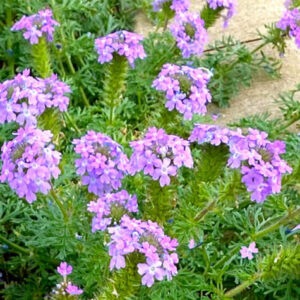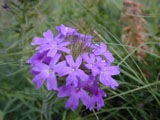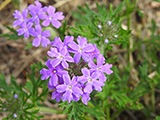
Prairie Verbena from NeilSperry.com
by CMG Betty J
Prairie Verbena, Glandularia bipinnatifida, is a Hill Country native found in open grassy locations that thrives in well-drained sand, clay, limestone or loam soils. Its range stretches throughout the American south to Mexico and Nicaragua. It needs a moderate amount of water and grows best in part shade. Also known as Dakota Vervain, Moradilla, and Dakota Mock Vervain, it is a member of the verbena family, which includes about 3,000 species of herbs, shrubs, and trees that live mostly in temperate regions. It is related to lantana, frog fruit, and teak trees.
This perennial flower has reclining stems, up to 2’ long, that radiate from the plant’s base and are usually about 12” tall. The leaves are long, opposite, and are linear or oblong. Individual prairie verbena flowers are purple or lavender, 1/4’” wide and grow in a cluster that is three to four inches across. Their bloom period is from March to October.
Prairie Verbena can be a nice addition to a naturalized garden in a residential setting. Its attractive, finely cut foliage provides a nice background for the purple balls of flowers. The blooms are nectar-rich and attract many species of butterflies and other insects.
